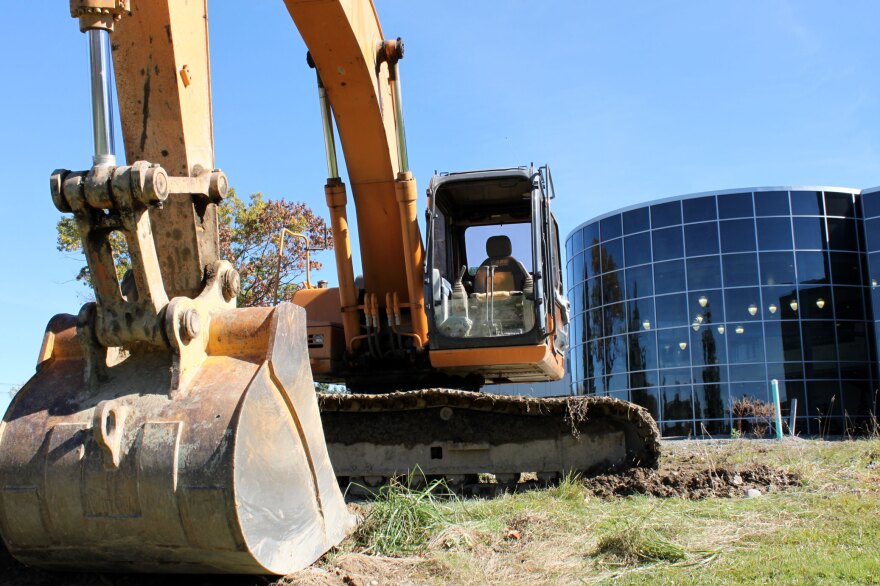Around election season, politicians like to talk about what they've done for a region. And they like to do that using numbers.
On Tuesday, Binghamton University, the flagship SUNY campus, hosted a well-attended groundbreaking for its newest research facility. Construction of the Center for Small Scale Systems Integration and Packaging (S3IP), also known as its Center of Excellence is being paid for with $30 million in state funds. The building will provide a center for academic and commercial partnerships to develop microelectronics technologies.
Speaking at the event, Rep. Maurice Hinchey (D) was typically frank in talking about bringing home the bacon for his district:
As a member of the appropriations committee in the U.S. Congress ... I was able to obtain more than $17 million for the internal operations here of this great project that is now about to start. That $17 million is going to go a long way to provide the expansion of the intellectual growth in the context of this operation.
But the conversation was not just about supporting "intellectual growth." It was also about how those ideas would bring returns for its taxpaying investors. University Interim President, Peter McGrath:
We are really big on small things. We are big on small things that pay off, and that's what this Center for Excellence is about.
State Senator Thomas Libous (R), who helped obtain the funds to construct the Center:
Here at Binghamton University we are creating career opportunities. We are creating them with local business and business throughout the entire country.
And the Center may pay off. S3IP has a track record of $700 million in economic impact, according to University figures.
But there's also some risk inherent in this kind of language. Technology research does make for great real-world applications, but it's a fine line to walk when talking about what the pursuit of knowledge can do for a local economy. First of all, because the academic world can get awfully nervous when you start trying to sum up what it contributes to quality of life, and long term research goals in terms of budgets, dollars and cents. Secondly, because ambitious investments come with uncertainties, and expectations that may get broken.
Here's another quote, this one from urban development researcher, Joel Kotkin, writing in Forbes about the promise of green jobs:
Nothing is perhaps more pathetic than the exertions of economic developers and politicians grasping at straws, particularly during hard times. Over the past decade, we have turned from one panacea to another, from the onset of the information age to the creative class to the boom in biotech, nanotech and now the "green economy."
So he's a little harsh - but ultimately his argument is that over-promising green jobs or blue jobs or orange jobs is risky.
A New York Times story this week reported that investment in the solar startups of Silicon Valley has dropped off as they've come up against China and other powerhouses producing green tech very cheaply. These companies may be able to innovate their way to an irreplaceable role in the market, but investors aren't as sure they will. That's the nature, the article points out, of tough, fast-paced business in a competitive market.
What's more certain is that overpromising what investments will achieve can undermine investments in the future, if old promises haven't panned out.
Perhaps the most telling line of yesterday's ceremonies came from Broome County Executive Barbara Fiala (D):
I'm going to keep my remarks brief because I think you've already heard from wonderful speakers this year, and very frankly because I'm not running this year. Catch me in two [years].






